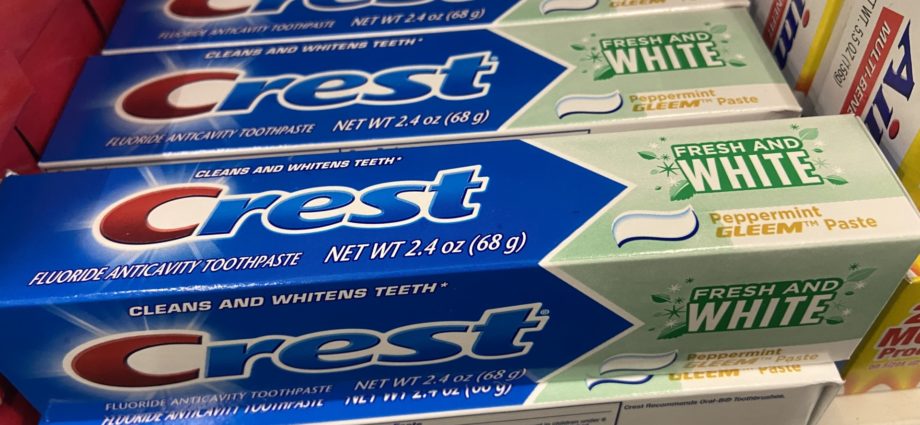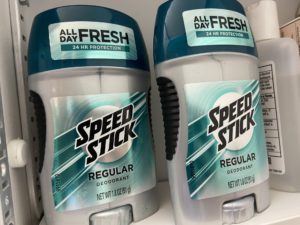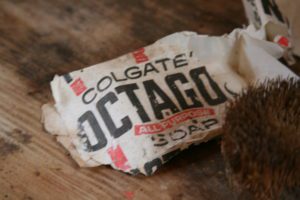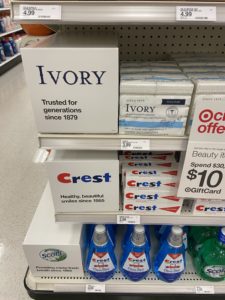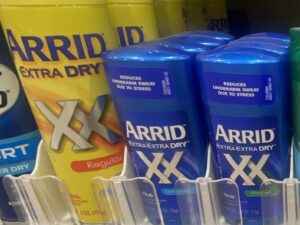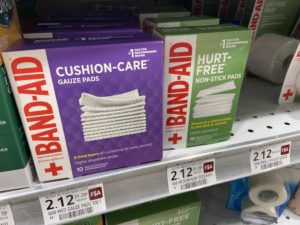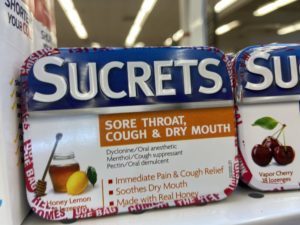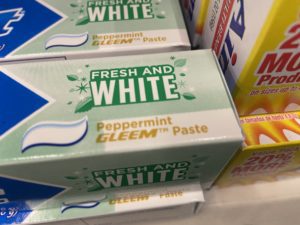 In today’s pantheon of toothpaste brands, there is Colgate and Crest, and others.
In today’s pantheon of toothpaste brands, there is Colgate and Crest, and others.
Of the popular 20th century brands, there was also Gleem, which dates to 1939 and most recently renewed by Procter & Gamble as a trademark in 2018. Gleem had been discontinued, but it has returned, both as a flavor in Crest and as an electronic toothbrush. It also appears as a a competitor to the toothpaste brands Paradonta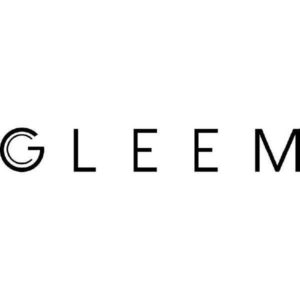 x and Sensodyne.
x and Sensodyne.
It seems there might be more Gleem around. Though the famous GL-70 ingredient is no longer seen.
This January, Procter & Gamble filed for a trademark for Gleem mouthwash. And in some Dollar Tree stores, the Gleem name has been added to Crest toothpaste packages. On May 28, 2020, P&G also applied for the Gleem brand as a tooth whitener. on June 16 of 2020, they also applied for Gleem in the toothbrush category, as well as applied for a logotype design, seen here.
Of interest was a competing application for Gleem from 2016, by an outside company. The application was abandoned on April 5, 2017. It appears P&G got its Gleem back. The use of the Gleem name on a few tubes of Crest on a lower shelf is a way to keep a brand alive, and connected a company, so the trademark does not get lost to new applicants, as disuse is the way a trademark is lost.
There could be room for Gleem. Through the latter part of the 20th century, an array of toothpaste innovations and names went to market and either disappeared, or ended up as second tier filler brands. These now secondary brands included Ultra Brite (a product of Colgate) and Church & Dwight’s Close Up, Aim and Pepsodent brands, the latter purchased from Unilever. There is also Aqua Fresh, made by GSK. Procter & Gamble has been a company that did not use filler brands, preferring to dominate particular categories with the best known brand available.
However, there is a reason for keeping smaller sized brands around. Tastes and habits change. Once giant brands can be rendered useless; having backups, in case they go back into fashion, makes sense.
Smaller brands also help with shelf space; There are limits to the walls of single brands that consumers will pay attention to. If the aisle looks like it is mostly Tide, one might turn away. Better two own the competition on the bottom tier shelf than have it be sold by a competitor.
Having a number of similar brands also allows for an economy of scale in production. Today, printing of packaging in smaller runs is much easier than a generation ago, and most of the base ingredients of a product are the same.
Lastly, keeping brands around, even if they are diminished, allows them to be used for new product launches.
Just for fun: Below, a 1950s commercial promoting Gleem as the toothpaste for people who could not brush after a meal.

